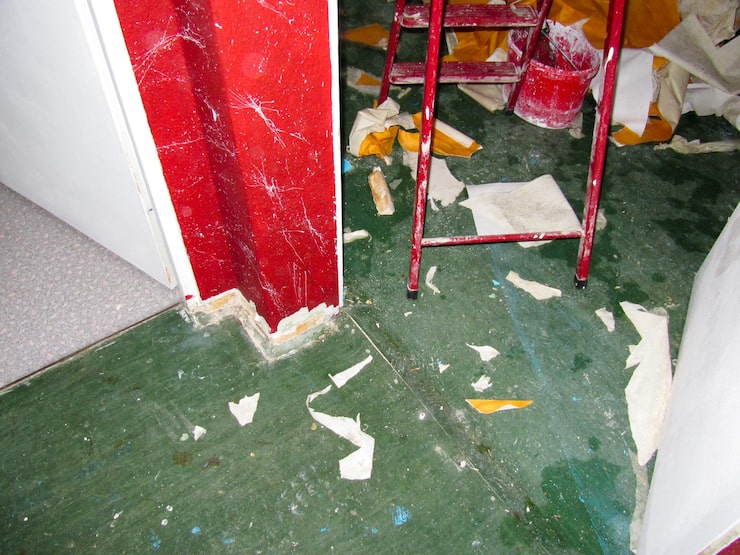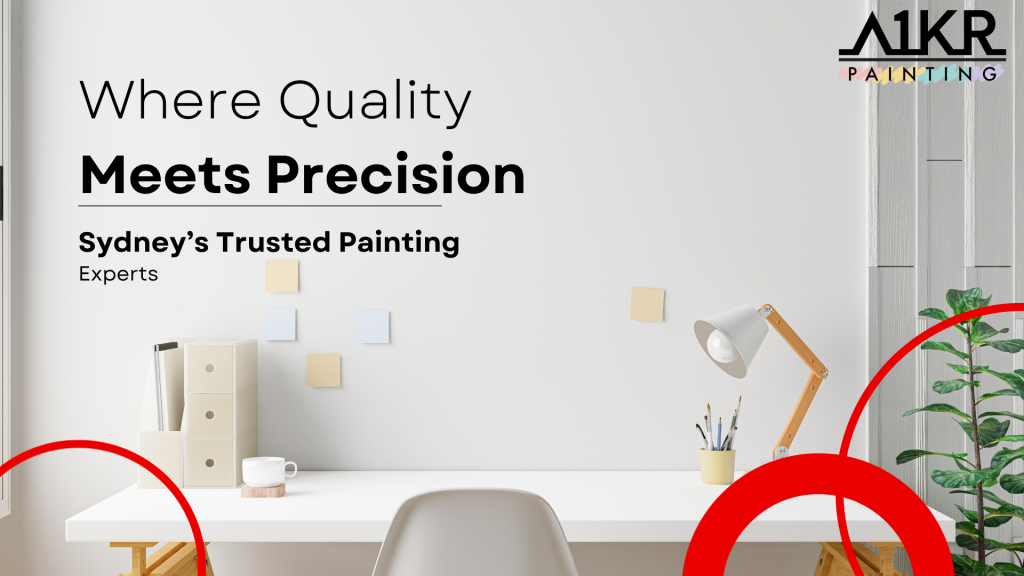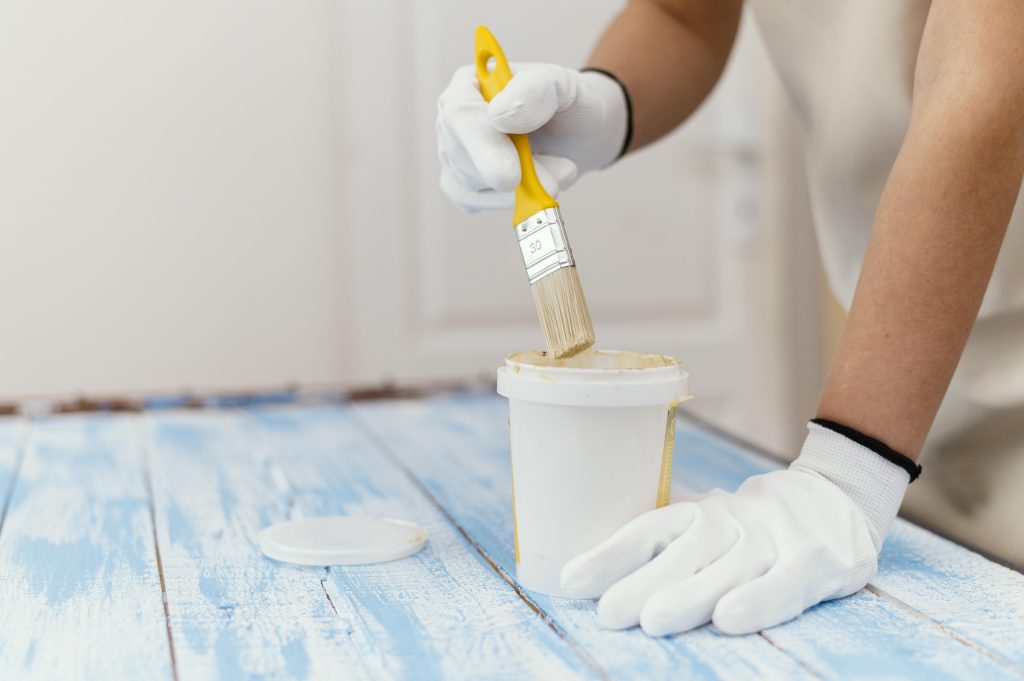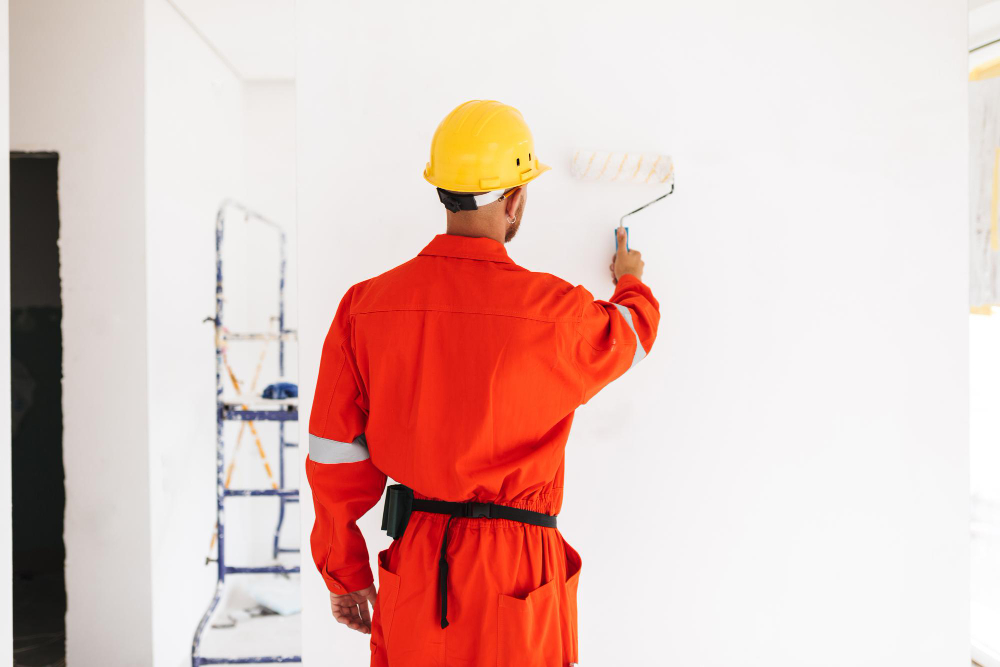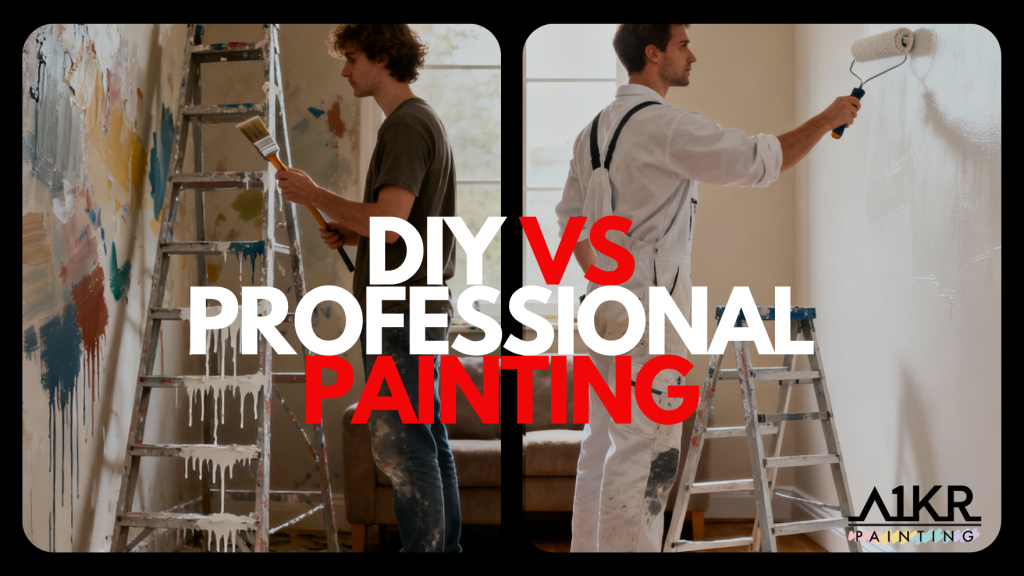
You can watch a couple of painting tutorial videos online and do it yourself. Seriously, how hard could it be?
We’re living in a world with the looming threats of climate change and skyrocketing costs. DIYing is the best remedy in a wasteful era, where consumerism remains prevalent.
While a DIY approach seems like a cost-effective breeze, it actually demands so much of your time and effort. Now, you’re in a dilemma: should you DIY or hire a professional?
In this article, we’ll tackle DIY vs. professional painting, comparing the time, cost, quality and long-term value.
The Appeal of DIY
So, why do the Aussies love the hands-on approach to home renovation?
Save Money
Everything is rising, from labour costs to materials. That’s why everyone is looking for the following economic means to take on projects.
Thanks to the internet, DIY projects are totally manageable. It has now become easier for Australian homeowners to buy supplies online and search for a DIY tutorial video.
Although the DIY route is time-consuming, it can save you a couple of Australian dollars.
Choose Your Own Pace
The freedom to do things at your own pace in your own way is too attractive to pass up. When you’re working by yourself, you have complete autonomy with your time and the project.
You can change your mind, and then change it again. You hold the reins on when to do the work and what everything looks like.
Take Pride in a “Handmade” Look
There’s always that sense of achievement when you’ve accomplished something by yourself, no matter how small the task is.
You’re not only saving money and moving to the beat of your own drum. Your mental health is also getting a boost from working on a massive task by yourself.
Look, there’s nothing wrong with a DIY job, but it comes with risks. Without the right tools and knowledge, you might not get the results you desire, leading to costly problems.
What DIY Really Costs (Beyond the Paint)
- Quality Painting tools
If you want beautiful paint finishes, you must invest in quality brushes, trays, rollers and ladders. It may be a significant upfront investment, but you’ll save more in the long run on costly rework and repairs.
- Prep Materials
About 80% of your painting project is preparation. That said, the success of your paint job mainly relies on your prep work. This includes buying drop cloths, sealers and tape to ensure the surface is protected and ready for the paint.
- Mistakes = More Time and Cost
Mistakes can happen when you’re DIYing, costing you more time and money.
Many DIY enthusiasts underestimate just how much work is involved when you’re flying solo. Painting isn’t just about splashing colours on your walls; it consists of a series of tedious steps.
- Opportunity Cost: Your Time on Weekends
Instead of going on other ventures, you might have to spend your spare time rolling paint.
Your time is your most important commodity. Thus, by choosing DIY painting, you won’t be able to pursue other activities, which means losing potential income.
What You Pay for With a Pro (And Why It’s Worth It)

- Quality Finishes with Less Mess
A long-lasting and aesthetically pleasing finish is more than just applying paint. It requires proper preparation, advanced techniques and premium-grade materials.
As a newbie DIY painter, you will struggle with paint streaks, drips, and poor paint adhesion.
Professionals understand the challenges in painting surfaces and know how to combat them efficiently. They have the expertise to ensure clean edges, smooth coats and no patchy results.
- Better Tools = Faster Work
Professionals have the tools and modern methods to speed up your painting project.
While you can invest in these tools, it’s costly for a one-off project. Ultimately, experts have the means to ensure superior results in such a short time.
- Warranty or Insured Work
DIY projects are not without dangers. You might be working at heights around electrical wires or handling chemicals. Without the proper equipment and gear, you’ll be putting your project and yourself at risk.
Professionals follow safety protocols on top of their insurance coverage, protecting you from any potential incident and damage.
- Peace of Mind When Selling or Renting
When you’re juggling work and family commitments, a DIY painting project can be a nuisance.
Professionals, though, look after your best interests and streamline your venture. What could take a month, they can shorten to two weeks with a trained crew.
When DIY Might Be Okay
DIY painting ideas work for small jobs like touch-ups and feature walls.
When you have the confidence and experience, you can totally paint by yourself and enjoy the process.
However, for bigger and complex projects, such as exteriors, ceilings, or prep-heavy areas, they should be left with the experts.
Why Our Clients Choose A One Korean Painting

At A One Korean Painting, we have a customer-first approach. We pride ourselves on delivering a friendly, fast and fair painting service. We provide transparent quotes so you know exactly what your professional painting cost is and don’t stretch your budget.
What makes us genuinely unique is our honesty, letting you know when a DIY painting for beginners is fitting or when it’s smarter to go pro.
Let’s kick things off! Please drop us a call for a no-obligation quote and advice.
Conclusion
DIY vs. professional painting: what’s your verdict?
DIYing can be an enjoyable experience. It’s cost-effective, flexible and organic. However, when looking at the long run, professional painting actually saves you more than just money.
With the right tools and expertise, professional painters can take on the job more efficiently. They can make intelligent suggestions on the best paints or techniques to use in a specific project.
Whatever you decide, go with what’s best for the job and your goals. Weigh your options before greenlighting any painting project. Get your free quote today, and let’s help you decide what’s right for your home.

